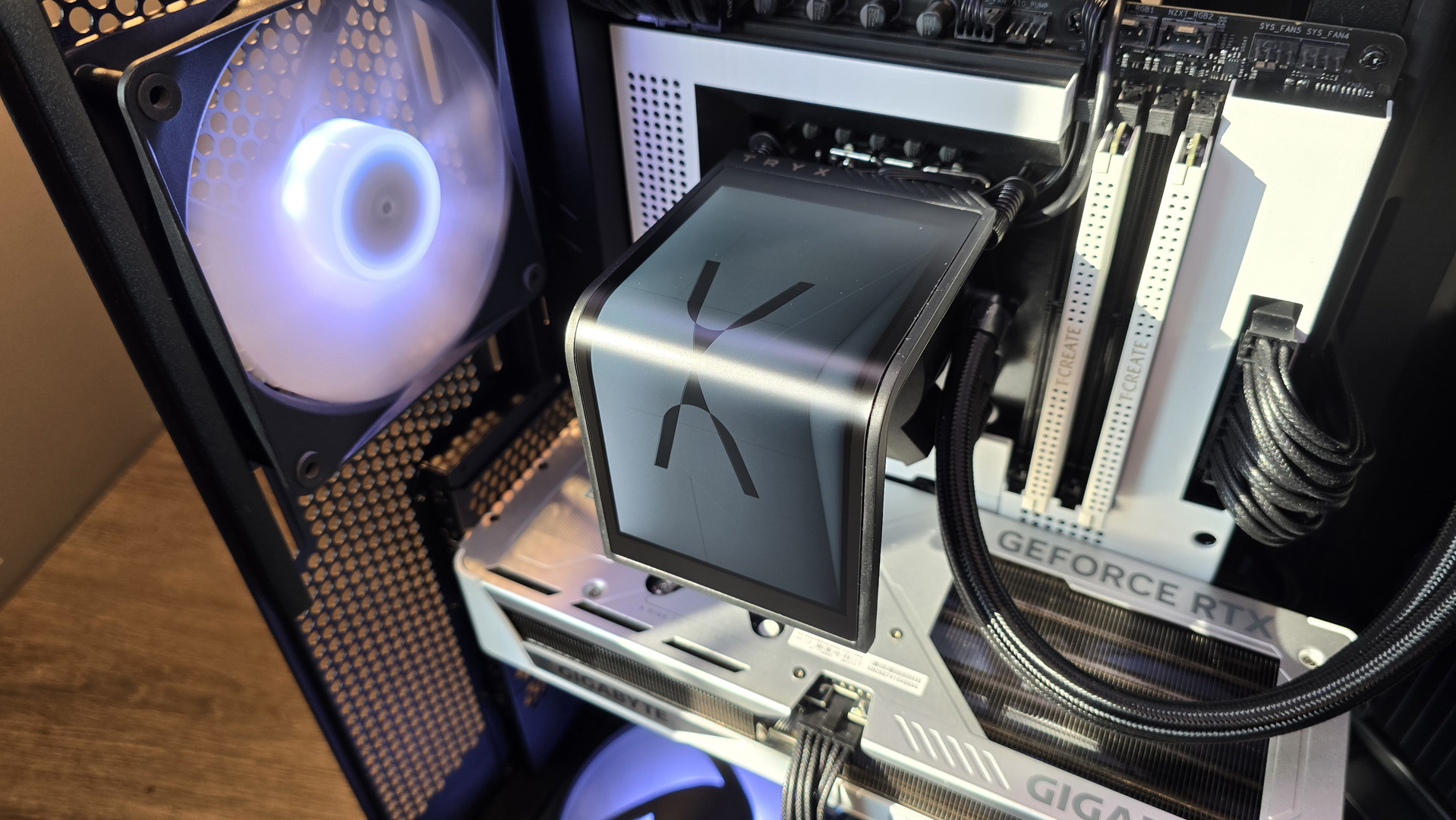Our Verdict
An awesome improvement over the launch version, with far better case compatibility and an improved display. The big win here is that massive price drop, arguably making it one of the most competitive display-based AIOs to date.
For
- Long tubing
- More affordable than previous version
- Broad compatibility
Against
- Performance is ok
- Still has some limitations
PC Gamer's got your back
When it comes to design, the mark of any good company is its ability to take criticism well. It's such a critical element that's often overlooked when we evaluate overall brands, but being able to take critique from a flawed product and then feed that back to the design team is incredibly advantageous on so many levels.
For one, it of course shows that those in charge are humble, that they lack ego or arrogance, but beyond that, it ensures the next product is better developed and that valid criticisms are accounted for. Yes, there's no doubt pushback from marketing bods, salesmen, and the folk bringing in the raw material, as of course they want to increase the profit margins (as they always do), but the advantage a refined development cycle brings is second to none.
Now, that might sound a bit pretentious, I'll admit, but it is an absolute truth when it comes to product design, and here's the thing: the Panorama SE ARGB very much follows that mantra. You can tell Tryx has looked at the feedback it received from the launch of the original Panorama and corrected its mistakes, improving on the design and releasing a better, more affordable product that delivers far more than it did previously.
I tested the first Panorama 360 earlier this year, and although it was bold and audacious and had that glorious curved OLED display sitting on top of an Asetek block, it lacked a bit of finesse to it. There were details that were overlooked, compatibility issues, short tubing runs, and setbacks that very much marred the overall experience. This wasn't the best CPU cooler I'd ever tested; that's a fact, but it was on the right path, and for a fledgling company fresh out the gate with a warranty longer than its history, it was by no means bad at all.
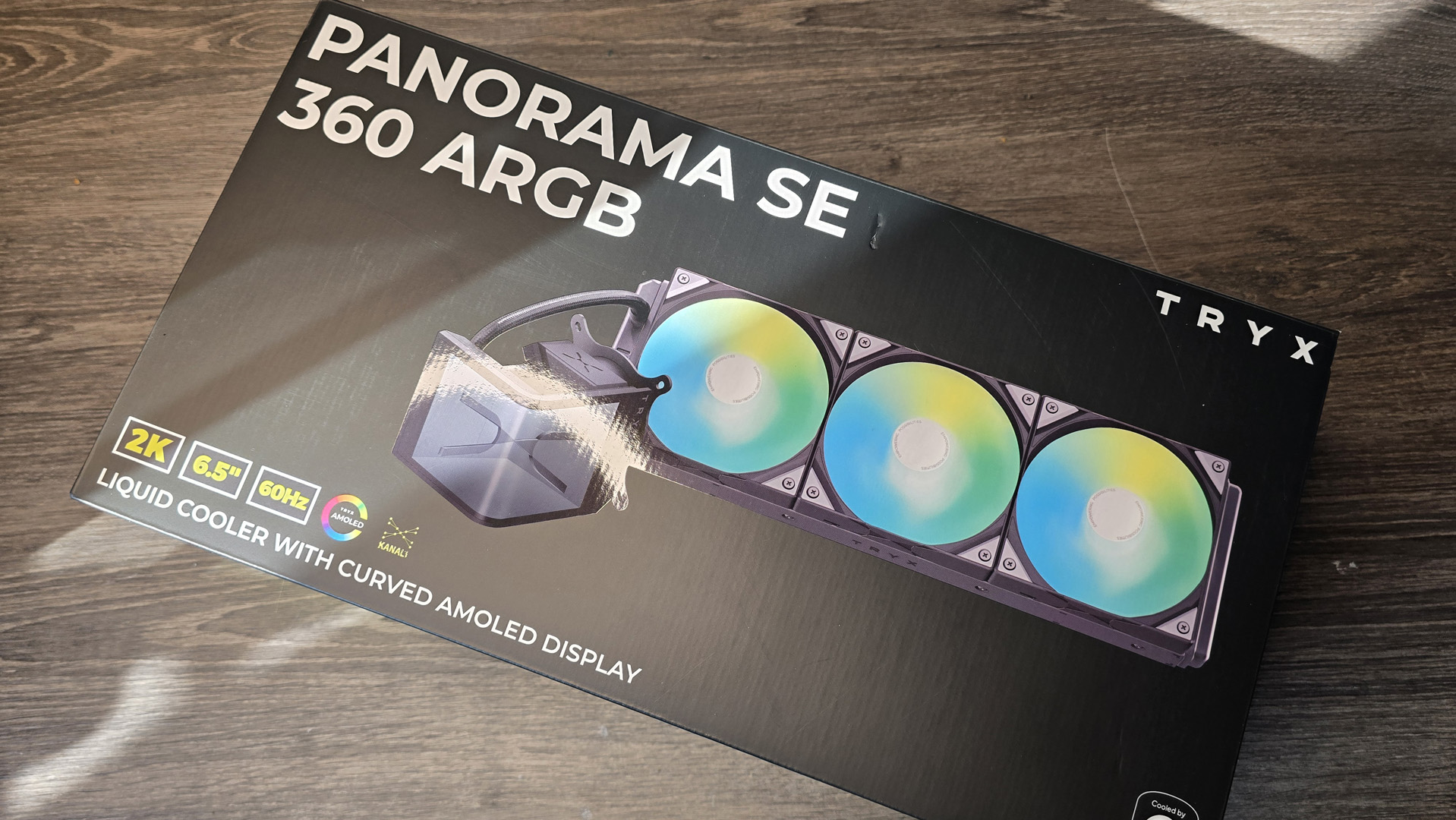
Socket Compatibility: AM5, AM4, LGA1851, LGA1700, LGA1200/115X
Dimensions: 394 x 120 x 27 mm
Radiator: 360 mm aluminum
Tubing: 450 mm
Pump: Asetek Adela Pump @ 2800 - 3600 rpm
Fans: 3x 120 mm ARGB
Lighting: Full RGB Fans
Screen: 6.67-inch Curved OLED, 2240 x 1080 @ 60 Hz
Warranty: 6-years unit, 2-years display
Price: $280/£250
The Panorama SE, then, is impressive. Not only because it's addressed a lot of the foibles I had with the original Panorama, but also because Tryx has managed to launch this new iteration within less than a year, correcting practically every single complaint I had.
The big one, of course, was the orientation of the display. As Tryx was using Asetek's 8th gen V2 water pump (the one with the annoying as hell tiny fan mounted in it), the only way you could orient the display that made any practical sense was so that the tubing outlet and inlet were situated on the bottom. You had no choice in the matter if you wanted to orient the screen the correct way around.
With the SE, Tryx has done away with Asetek's clunky, massive superblock and instead opted for its far lower profile Adela pump instead, without the included pointless fan. It's also gone ahead and changed the mounting solution on that curved OLED display, so you can now orient it in one of three directions on the center of the CPU block, meaning you can now rotate that block in any manner you need to ensure your tubing ports can effectively go in any orientation.
Keep up to date with the most important stories and the best deals, as picked by the PC Gamer team.
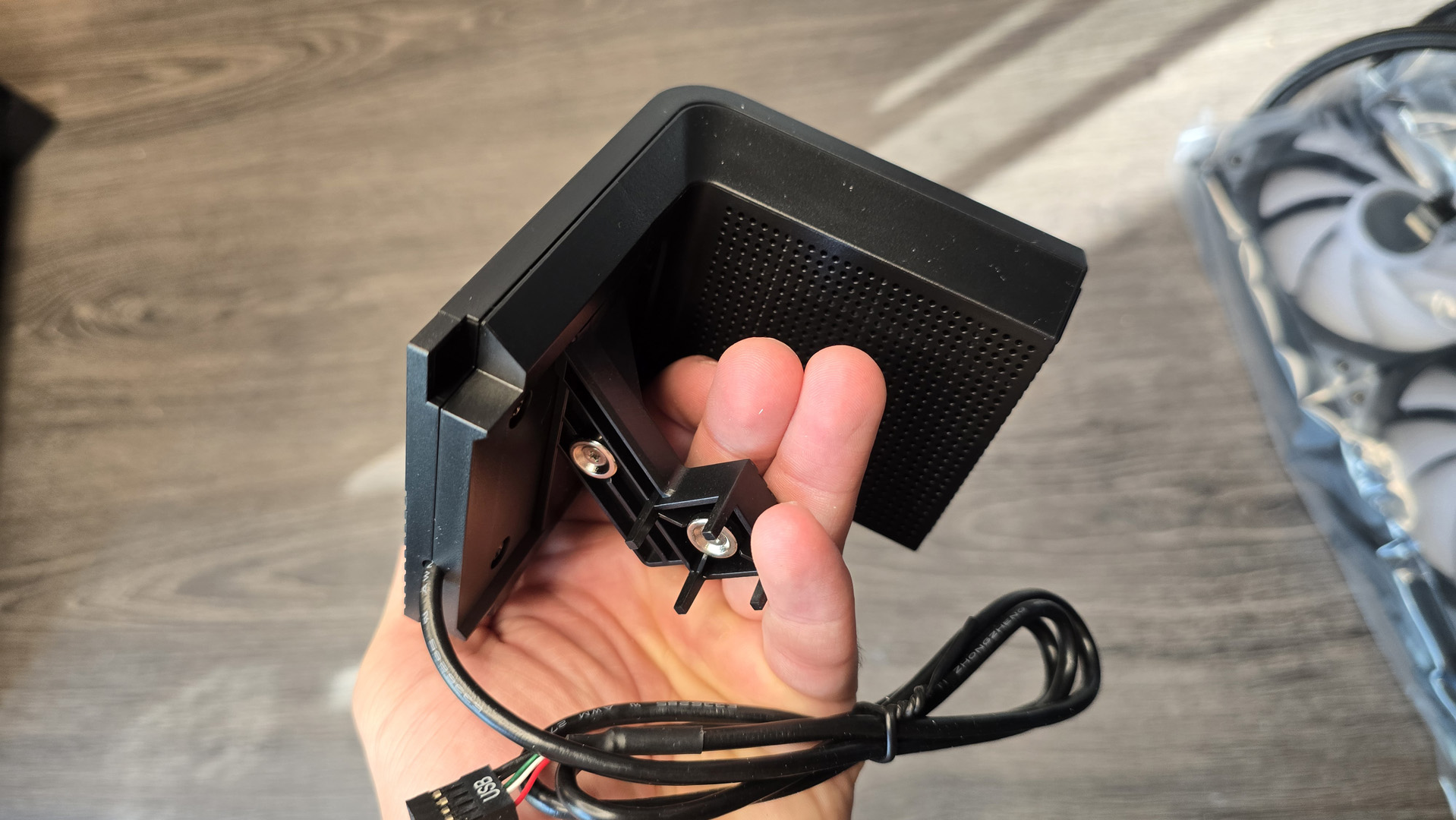
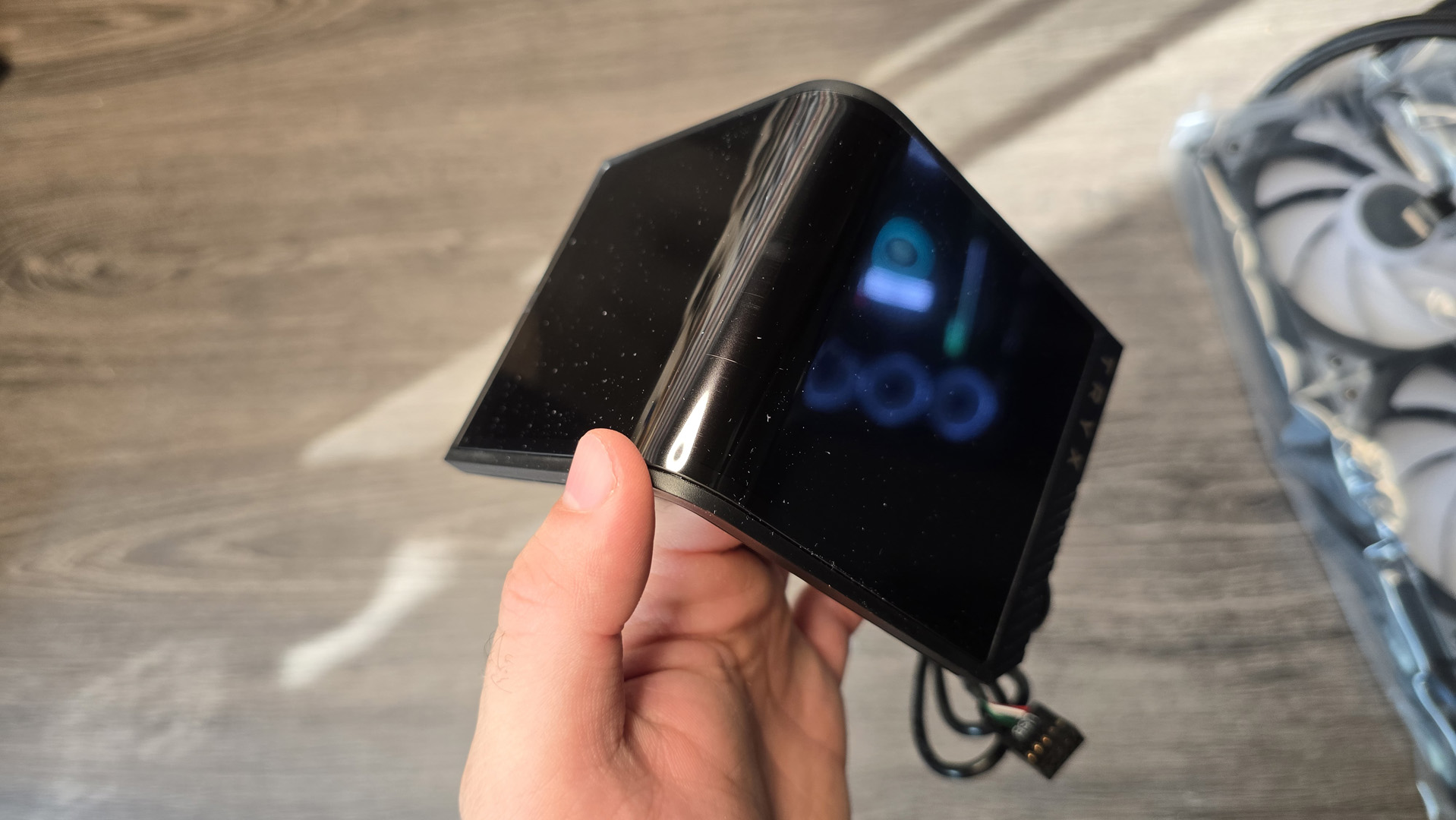
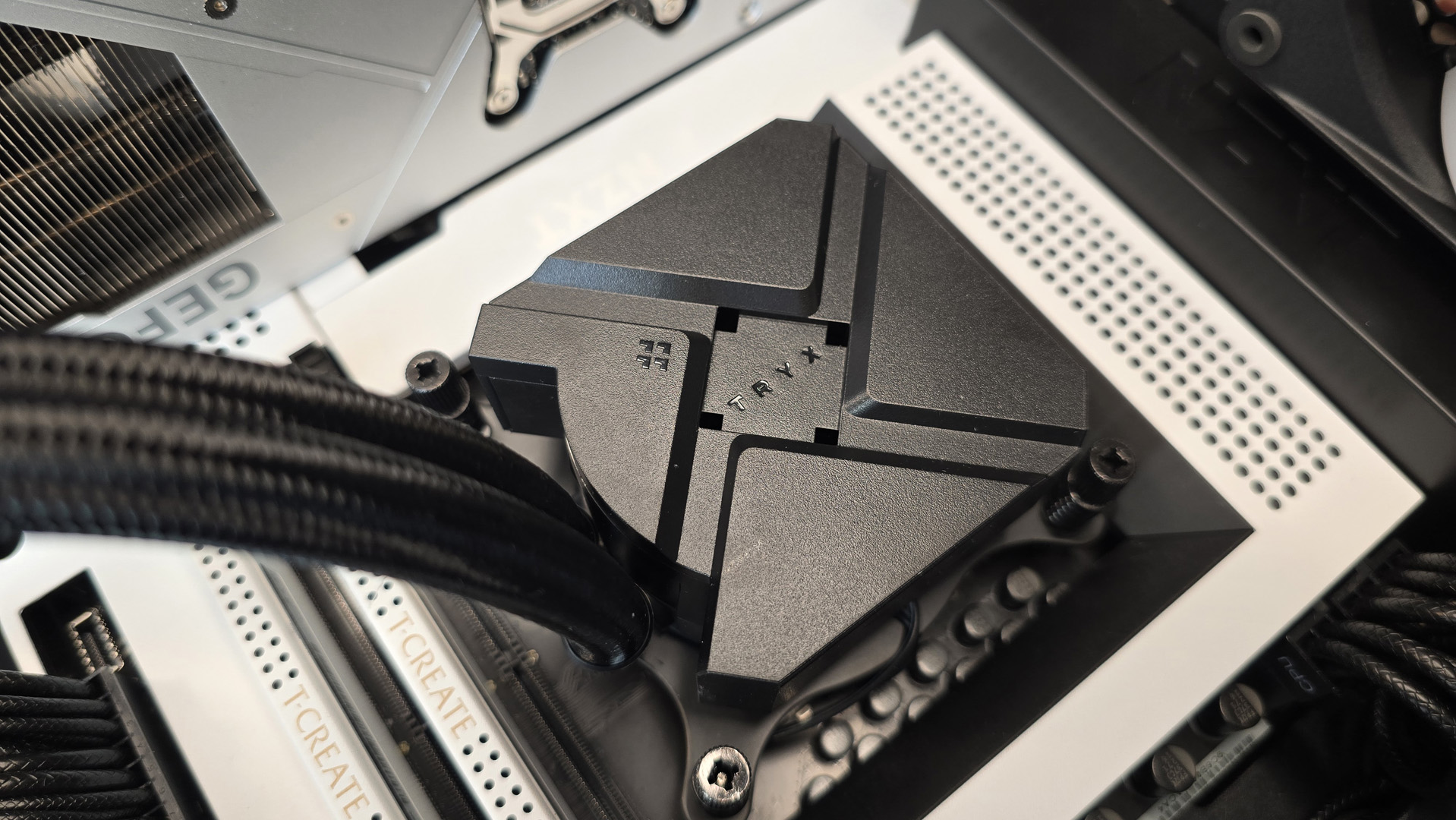
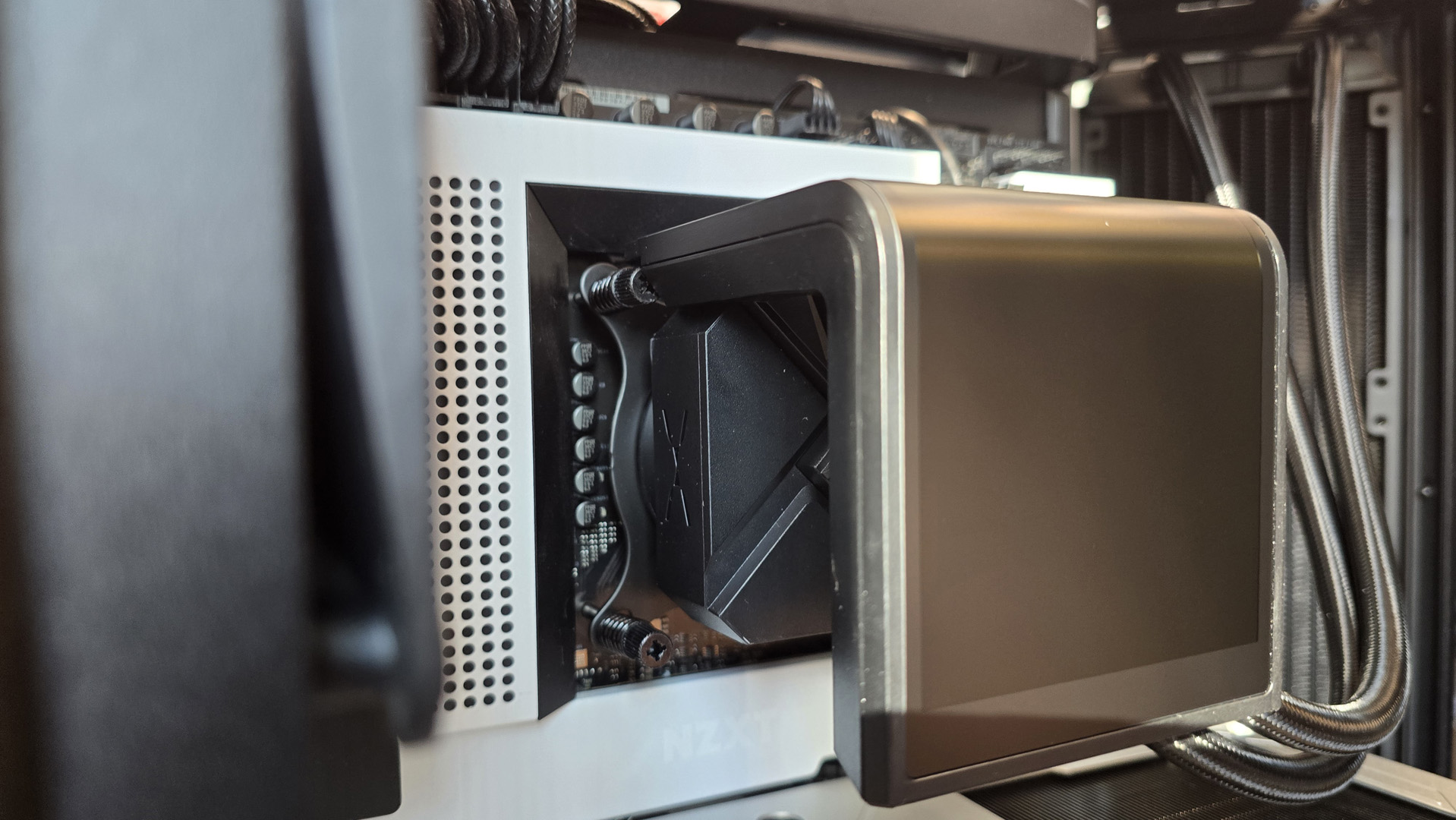
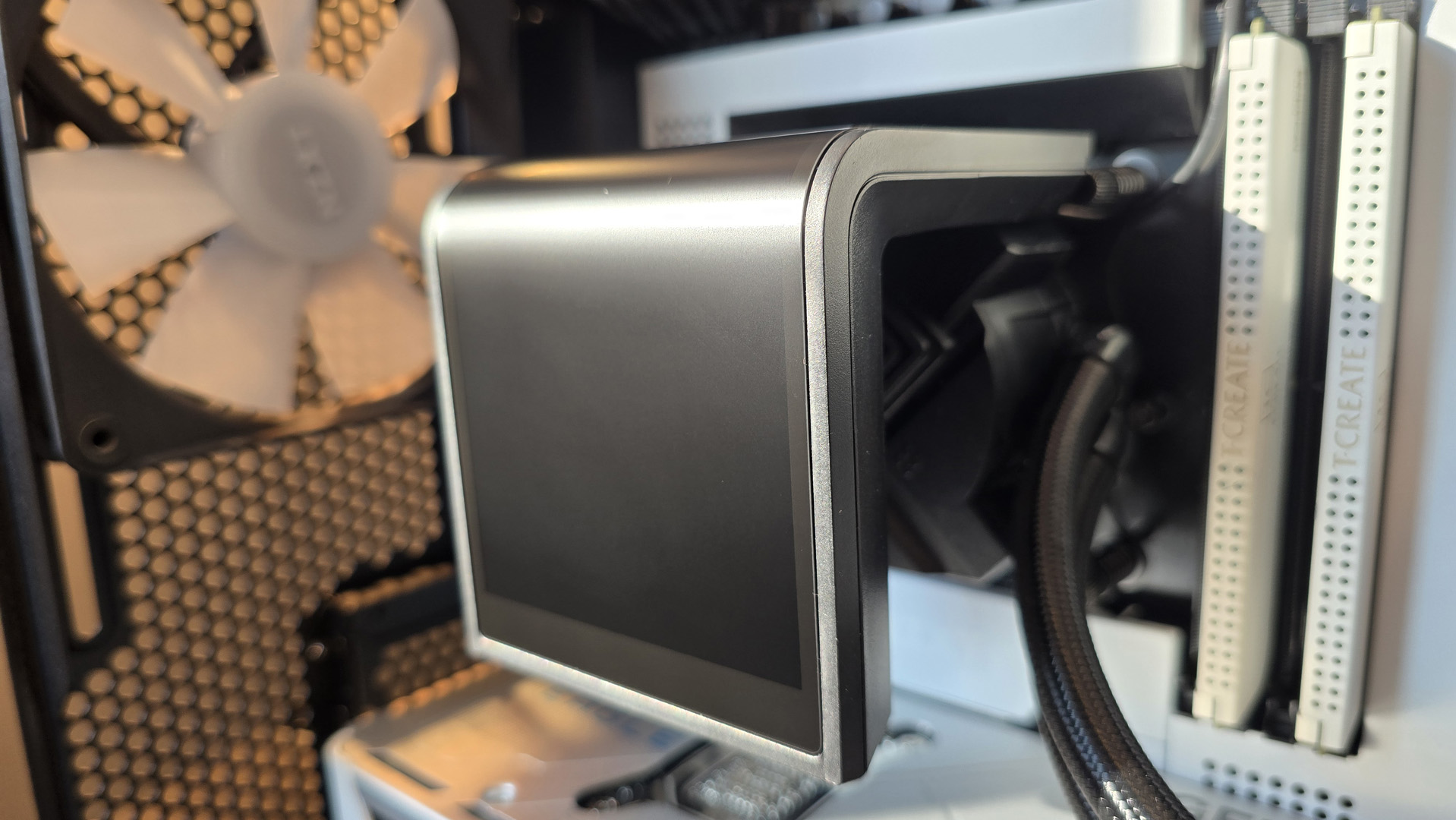
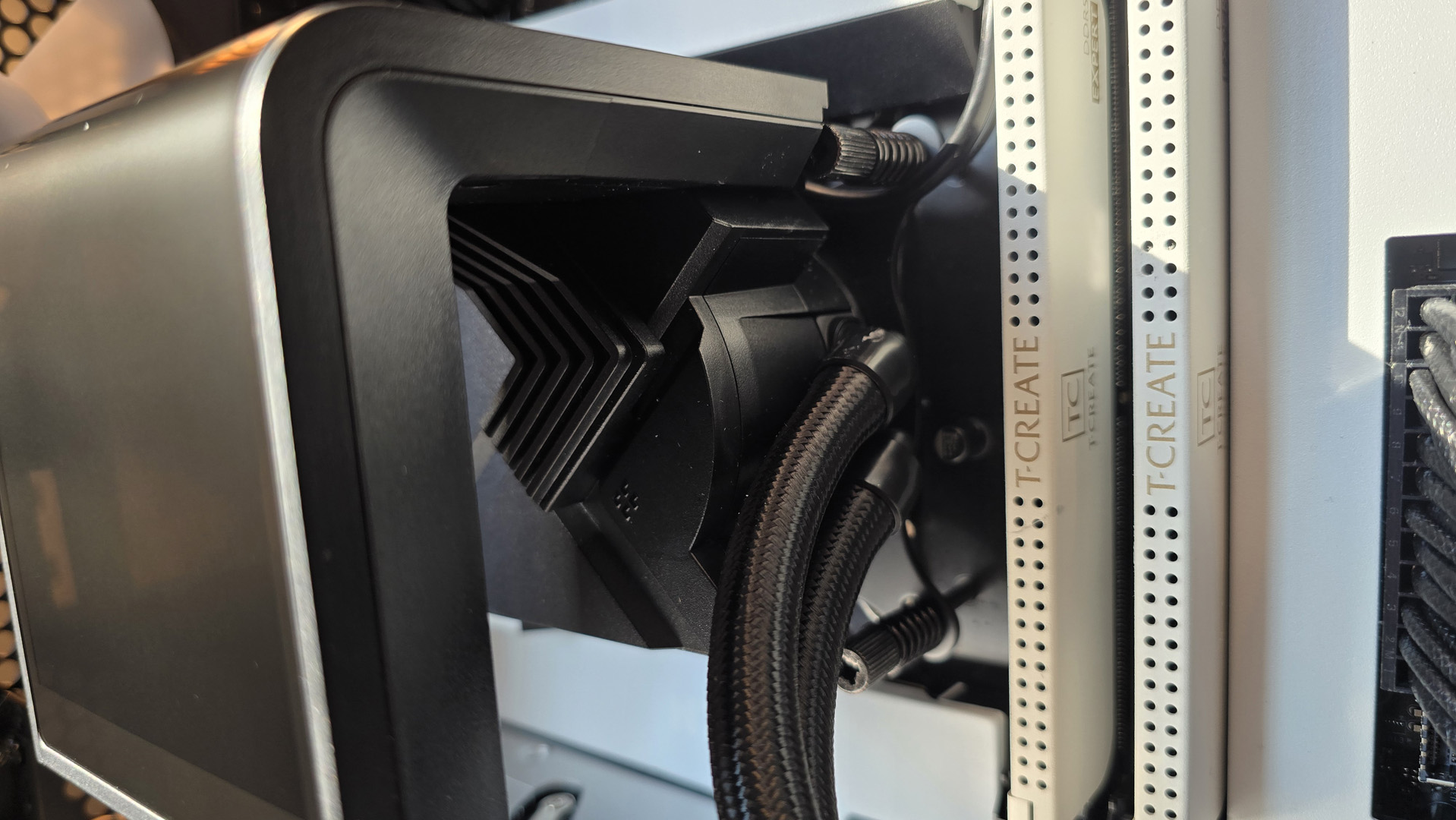
It's not a flawless system; the display doesn't go over the tubing directly, sadly, but it does give you a grand total of 12 different mounting configurations you can set this up to operate in, rather than the one we had previously.
The screen is now noticeably larger as well, moving up from a 6.5-inch display to 6.67 inches, with an increased resolution, and some brightness calibration chucked in for good measure. The Kanali also now has full support for it too, with a "waterfall" mode, if you do opt to mount it vertically like I have.
Tubing has also seen a significant improvement as well, bumping up from 400 mm to 450 mm, and the addition of a set of new ARGB fans has not only dropped the noise levels substantially but also kept performance relatively consistent.
Positives abound, it doesn't quite nail the performance measures (no best AIO for 2025 accolades for you, no sir) as well as its predecessor did. Its average benchmarked temperature from my testing sat at around 72 degrees Celsius total (69°C adjusted for ambient), versus the 66°C its Panorama predecessor managed, with high average temps recorded in Metro Exodus, Baldur's Gate 3, x264, and Cinebench, being particularly noticeable.
One interesting takeaway, however, was how rapidly this thing managed to cool down to 33°C after its last Cinebench run, managing that in an impressive 104 seconds, a whole 12 seconds faster than the original Panorama (and markedly quicker than anything else I've tested to date). This is a bit of a hunch, but I suspect this could be down to that 450 mm tubing.
In essence, although it's only an additional 50 mm on either tubing run, Tryx has effectively increased the total liquid volume inside the Panorama by around 11.3 ml (if my dubious math is correct). By default, the more coolant you add, the greater the thermal capacity of that coolant (you can add more heat energy to it without the temperature of that coolant increasing as fast as with smaller reservoirs).
Our time taken to reach that lowest temperature test requires us to run and score our 10-minute Cinebench test first, then wait five minutes for HWInfo to report the lowest temperature on the CPU. We then run Cinebench again, but this time only for 5 minutes, and then time how long it takes to return to that steady state.
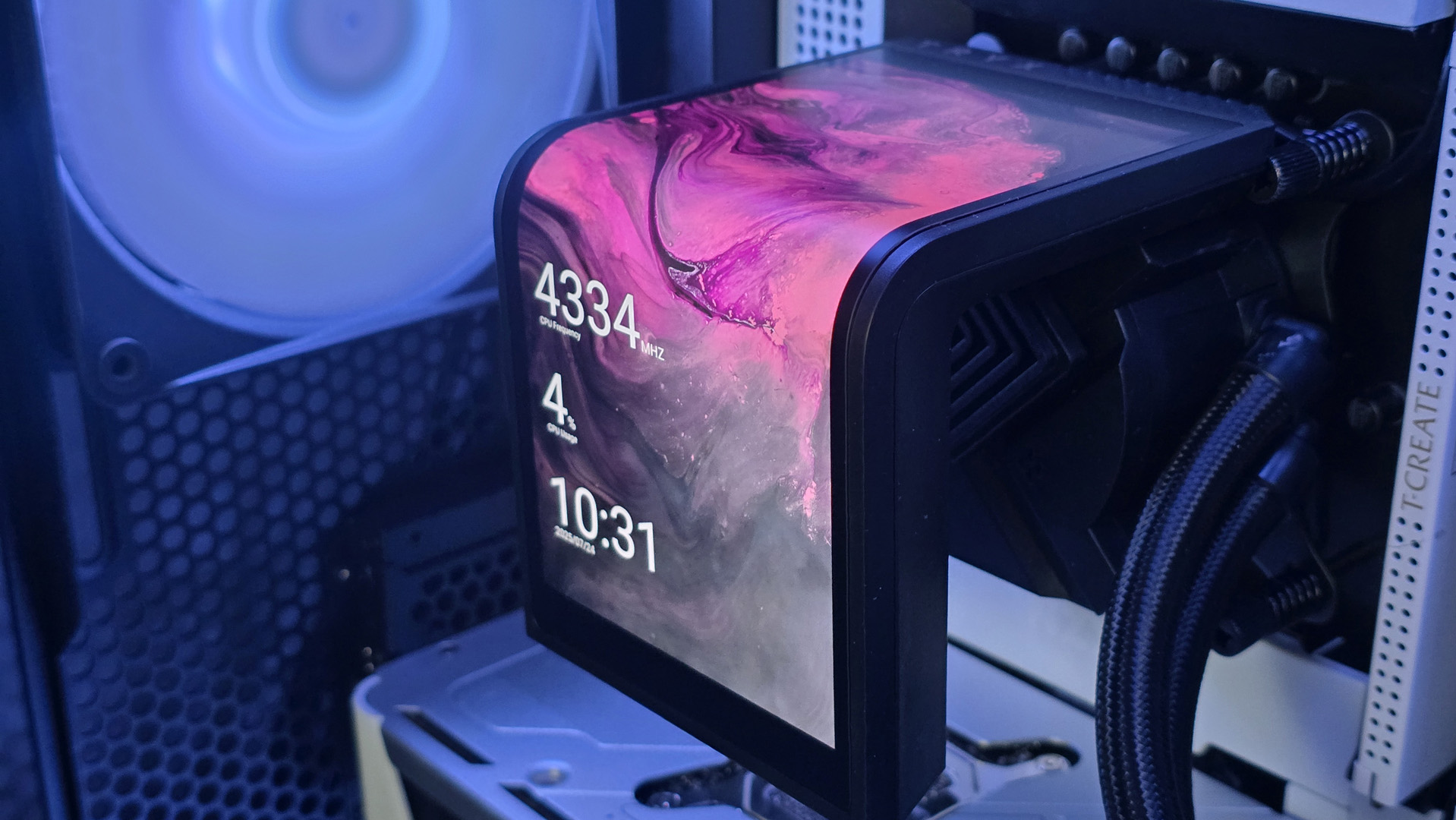

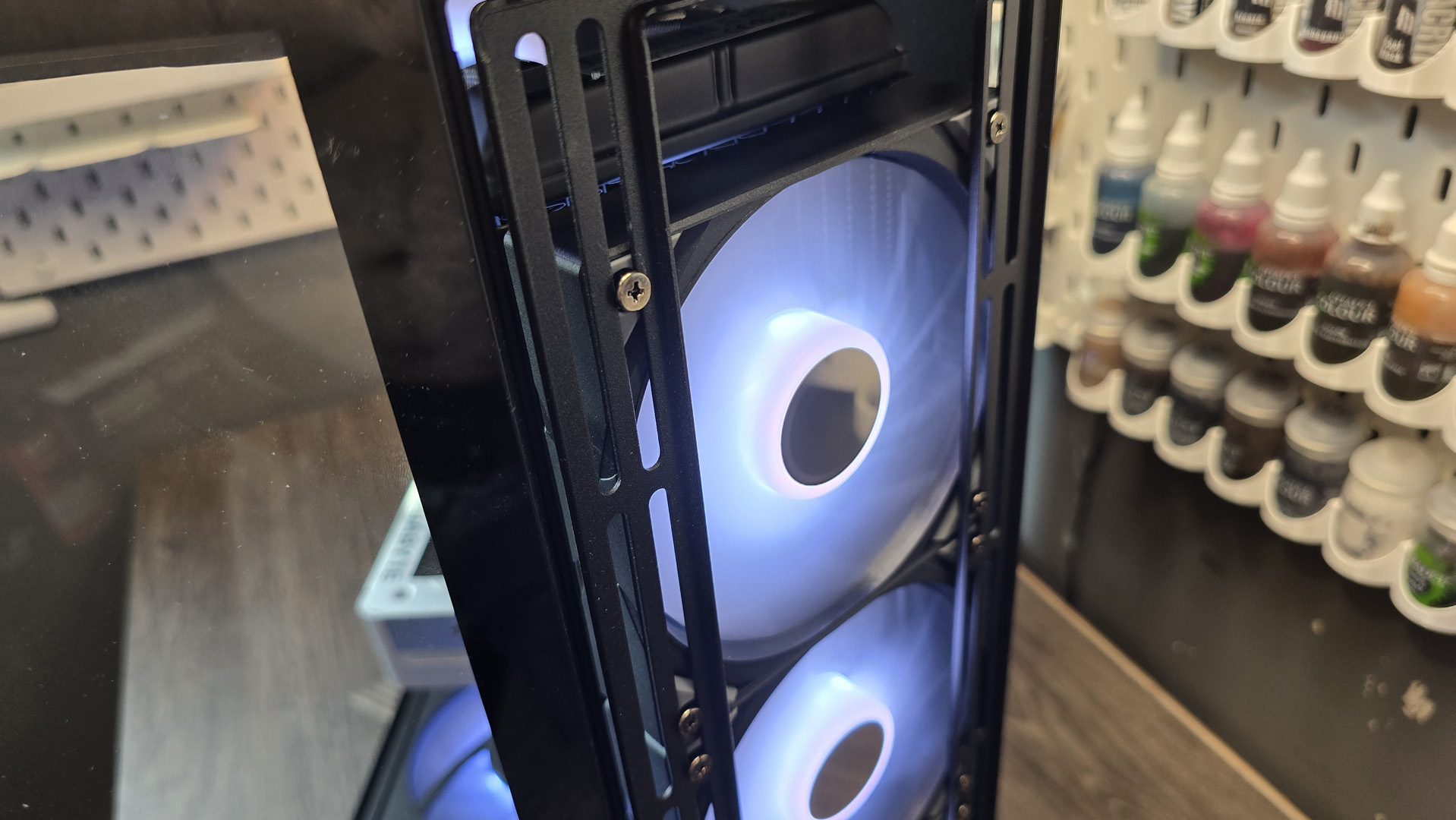
✅ You want a broadly compatible, affordable AIO that still packs a punch: An incredible curved OLED display, broad case compatibility, and solid performance make this a surefire pick, particularly given the price.
❌ You're trying to cool the sun: Hyperbole? Yes. But it's not quite as efficient as some of the competition out there, at least not when managing max temperatures under heavy load. Even so, we're talking a few degrees.
So while the fan and pump performance may be somewhat less effective than the non-RGB fans and the 8th-gen Asetek pump Tryx was using previously, leading to higher average temperatures over longer periods, the increased reservoir size means that shorter bursts of high-intensity load are effectively quicker to cool, as the coolant requires longer than five minutes to heat up to the same temperature.
The big win, though, by far and away, beyond performance anomalies and slight design tweaks, is the price, and oh boy is it a drop. We're talking $60 / £80 compared to the original Panorama. That is a staggering reduction in cost (around 18% in the US, or 24% in the UK), particularly given the extras you're getting. A better display, RGB fans, longer tubing, a sleeker more compatible design, and that same seamless mounting procedure. The list is pretty endless, and that alone absolutely boosts this score into the stratosphere here.
Yes, you are making some sacrifices compared to the competition out there; the NZXT Kraken Elite is still a monster, of course. The Panorama just isn't quite as effective on temperature management, but other than that, it's hard to beat. I'll see you in three months time for the Panorama X, probably…
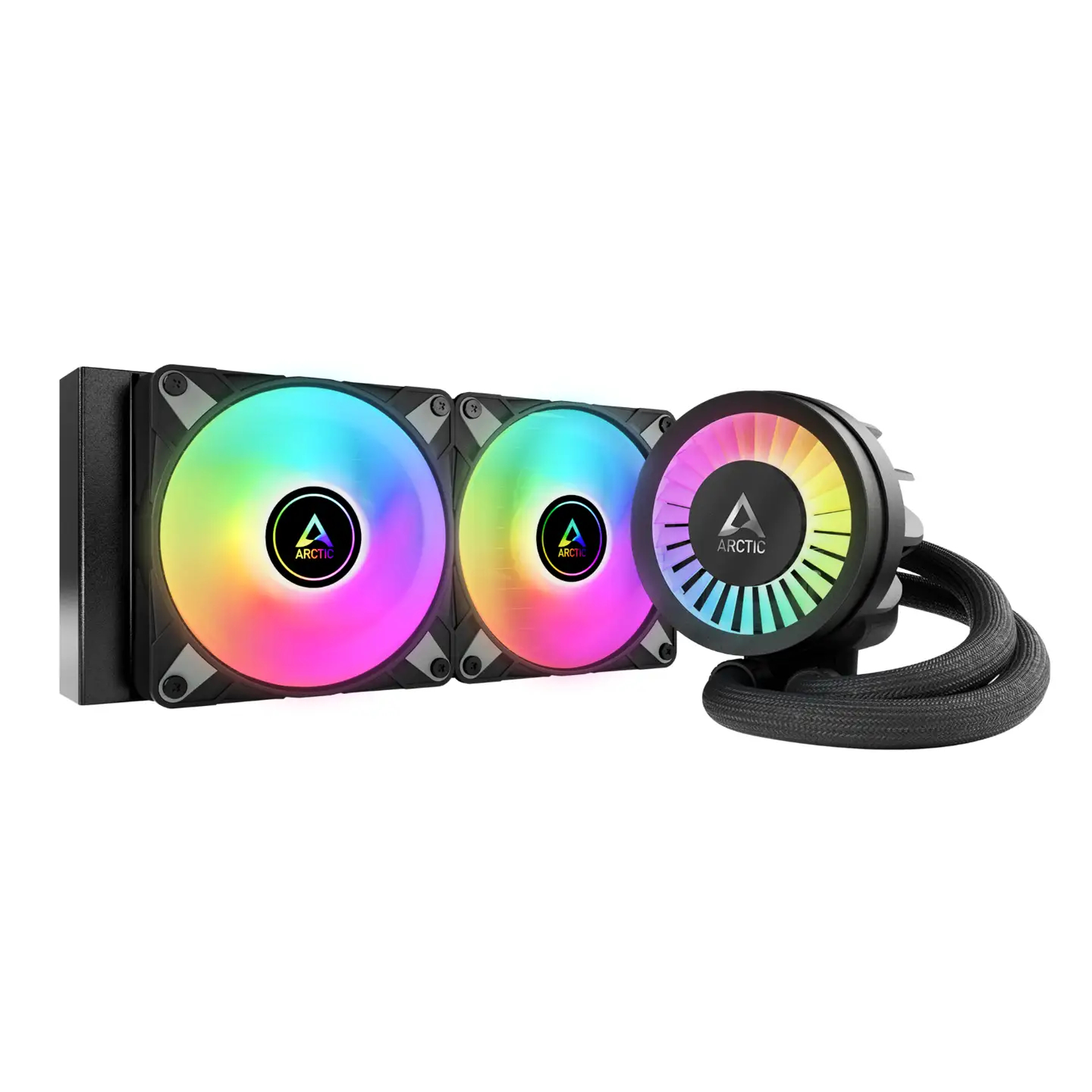
1. Best AIO:
Arctic Liquid Freezer III Pro
2. Best budget AIO:
Cooler Master MasterLiquid Core II
3. Best high-end AIO:
Be Quiet! Light Loop
4. Best screen:
NZXT Kraken Elite RGB (2024)
5. Best stealth:
Corsair Nautilus RS
An awesome improvement over the launch version, with far better case compatibility and an improved display. The big win here is that massive price drop, arguably making it one of the most competitive display-based AIOs to date.
After graduating from the University of Derby in 2014, Zak joined the PC Format and Maximum PC team as its resident staff writer. Specializing in PC building, and all forms of hardware and componentry, he soon worked his way up to editor-in-chief, leading the publication through the covid dark times. Since then, he’s dabbled in PR, working for Corsair for a while as its UK PR specialist, before returning to the fold as a tech journalist once again.
He now operates as a freelance tech editor, writing for all manner of publications, including PC Gamer, Maximum PC, Techradar, Gamesradar, PCGamesN, and Trusted Reviews as well. If there’s something happening in the tech industry it’s highly likely Zak has a strong opinion on it.
You must confirm your public display name before commenting
Please logout and then login again, you will then be prompted to enter your display name.
